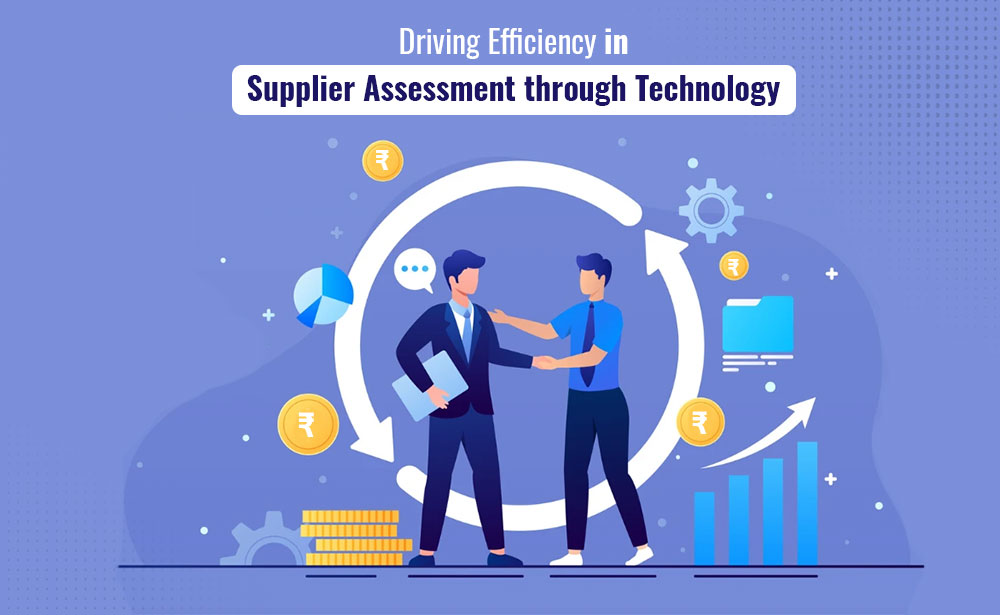Supplier assessment has become a critical component of successful procurement and supply chain management in today’s fast-paced and increasingly interconnected business world. Suppliers’ quality, reliability, and performance can significantly impact a company’s operations and bottom line. As businesses strive for greater efficiency and competitiveness, the role of assessment has evolved, driven in large part by the digital revolution.
In this guest post, we’ll explore how technology is reshaping vendor assessment, making it more efficient, data-driven, and capable of driving better business outcomes. We’ll delve into the critical aspects of assessments of supplier in the digital age, its benefits, and best practices for leveraging technology to enhance this essential function.
The Evolution of Supplier Assessment
Traditionally, vendor assessment was a manual, time-consuming process. Procurement teams relied on paper-based documents, spreadsheets, and periodic audits to evaluate suppliers. This approach was labor-intensive and limited in its ability to provide real-time insights into supplier performance.
However, the digital age has ushered in a new era of assessment. Here’s how technology has transformed this crucial business function:
- Real-time Data Access: In the digital age, businesses can access real-time data on their suppliers. This means that procurement teams can monitor supplier performance, track deliveries, and assess quality in real time. For example, with the integration of Internet of Things (IoT) sensors, a company can track the temperature and humidity conditions of goods during transit.
- Advanced Analytics: Data analytics tools have made it possible to analyze vast amounts of supplier data quickly and accurately. These tools can identify trends, anomalies, and areas for improvement, helping businesses make data-driven decisions.
- Supplier Portals: Many companies now offer portals where suppliers can submit documentation, update their information, and interact directly with procurement teams. This self-service model streamlines communication and reduces administrative burdens.
- Risk Assessment: Technology allows for more sophisticated risk assessment. Businesses can analyze a supplier’s financial stability, geopolitical risks, and regulation compliance using data-driven models.
- Machine Learning and AI: Machine learning and artificial intelligence algorithms can predict supplier behavior, such as delivery times and quality fluctuations, enabling proactive management of potential issues.
Benefits of Digital Supplier Assessment
The adoption of digital technologies in assessment of supplier brings several benefits to businesses:
- Enhanced Efficiency: Digital tools automate many aspects of vendor assessment, reducing manual effort and saving time. This efficiency enables procurement teams to focus on strategic activities.
- Improved Accuracy: Automation reduces the risk of human error in data entry and analysis, leading to more accurate assessments.
- Real-time Visibility: With real-time data access, businesses can respond quickly to supply chain disruptions or changes in supplier performance, minimizing risks.
- Cost Savings: Efficiency gains and improved decision-making lead to cost savings across the supply chain.
- Predictive Insights: Advanced analytics and AI can predict supplier-related issues before they occur, allowing businesses to take preventive measures.
Best Practices for Leveraging Technology in Supplier Assessment
To fully harness the power of technology in assessment, businesses should follow these best practices:
- Define Clear Objectives: Start by defining your assessment goals. What are you trying to achieve? Clear objectives will guide your technology adoption strategy.
- Data Integration: Integrate data from various sources, such as ERP systems, supplier portals, and IoT sensors, to create a comprehensive view of supplier performance.
- Continuous Monitoring: Implement tools that provide real-time monitoring of suppliers. This allows for timely interventions when issues arise.
- Standardized Metrics: Develop standardized metrics and key performance indicators (KPIs) that align with your business goals. Ensure that these metrics are consistently tracked and analyzed.
- Collaboration: Encourage collaboration between procurement teams and suppliers. Technology can facilitate transparent and efficient communication.
- Training and Change Management: Invest in training and change management to ensure your teams are proficient in using the new technology.
Case Study: XYZ Corporation
How XYZ Corporation, a global manufacturing company, leveraged technology to transform its supplier assessment processes.
Challenges Faced:
- Manual data entry and analysis were time-consuming and error-prone.
- Lack of real-time visibility into supplier performance led to supply chain disruptions.
- Difficulty in assessing the financial stability of global suppliers.
Digital Solution Implemented:
XYZ Corporation adopted an integrated supplier assessment platform, including real-time data feeds, advanced analytics, and supplier portals. Here’s how this technology addressed their challenges:
- Automated data collection reduced manual effort by 80%.
- Real-time monitoring allowed the company to proactively address supply chain disruptions.
- Advanced analytics provided insights into supplier financial health, enabling better risk assessment.
As a result, XYZ Corporation experienced a 15% reduction in supply chain costs and a 30% decrease in supply chain disruptions. Supplier collaboration improved, leading to better overall performance.
Conclusion
Supplier assessment is no longer a static, manual process but a dynamic, data-driven function that can significantly impact a company’s bottom line. In the digital age, businesses that leverage technology to enhance their vendor assessment processes gain a competitive advantage by making more informed decisions, reducing risks, and building stronger supplier relationships. To stay ahead in today’s rapidly changing business landscape, embracing the digital transformation of assessment is imperative.
By adopting the right technology and best practices, businesses can unlock the full potential of supplier evaluation in the digital age, driving efficiency, accuracy, and resilience across their supply chains.


